Information By Dr. Shrihari Anikhindi – Consultant Gastroenterologist, Sir Ganga Ram Hospital, New Delhi
Dr. Shrihari Anikhindi
Best gastroenterologist in Delhi
MBBS, MD (Medicine), DrNB (Gastroenterology), SCE (UK), MNAMS
Consultant Gastroenterologist
Sir Ganga Ram Hospital, New Delhi
Assistant Professor, GRIPMER
1. Upper GI Endoscopy
(Esophagogastroduodenoscopy or EGD)
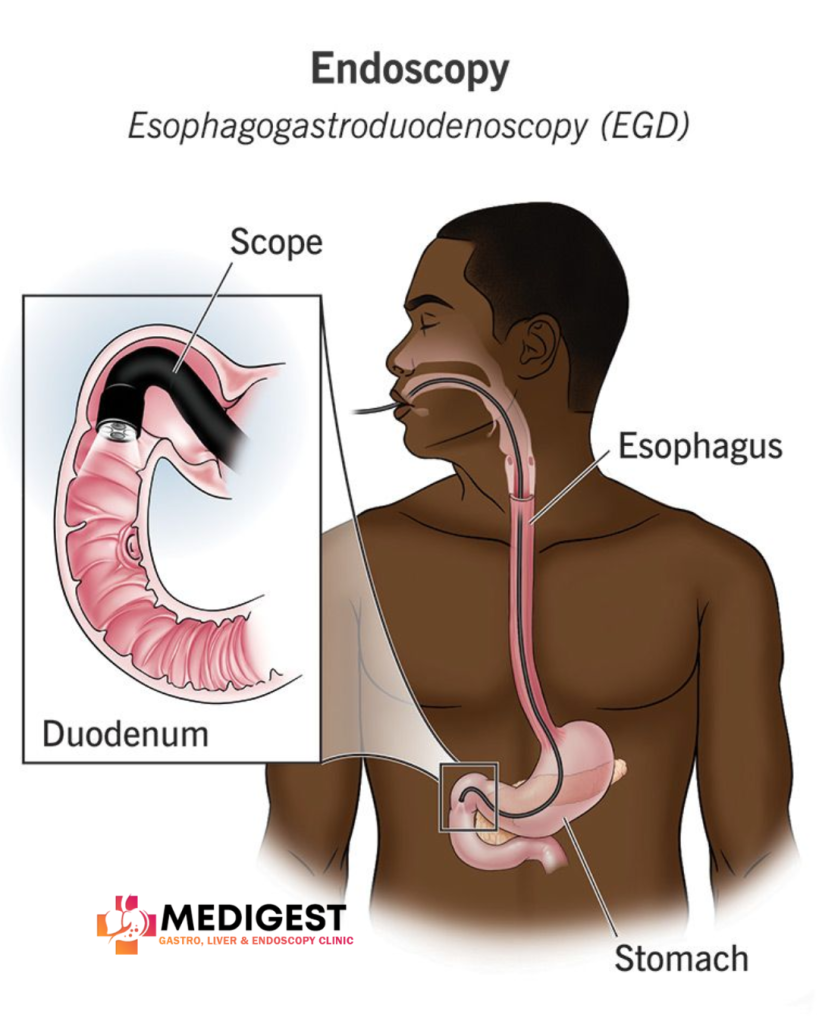
What it examines:
Esophagus, stomach, and the beginning of the small intestine (duodenum).
When it’s recommended:
- Chronic acid reflux or heartburn
- Difficulty swallowing (dysphagia)
- Unexplained vomiting or nausea
- Upper abdominal pain or ulcers
GI bleeding
Procedure:
A thin, flexible tube with a camera is inserted through the mouth to examine the upper digestive tract. It allows for tissue sampling (biopsies), removal of polyps, and treatment of bleeding.
2. Colonoscopy
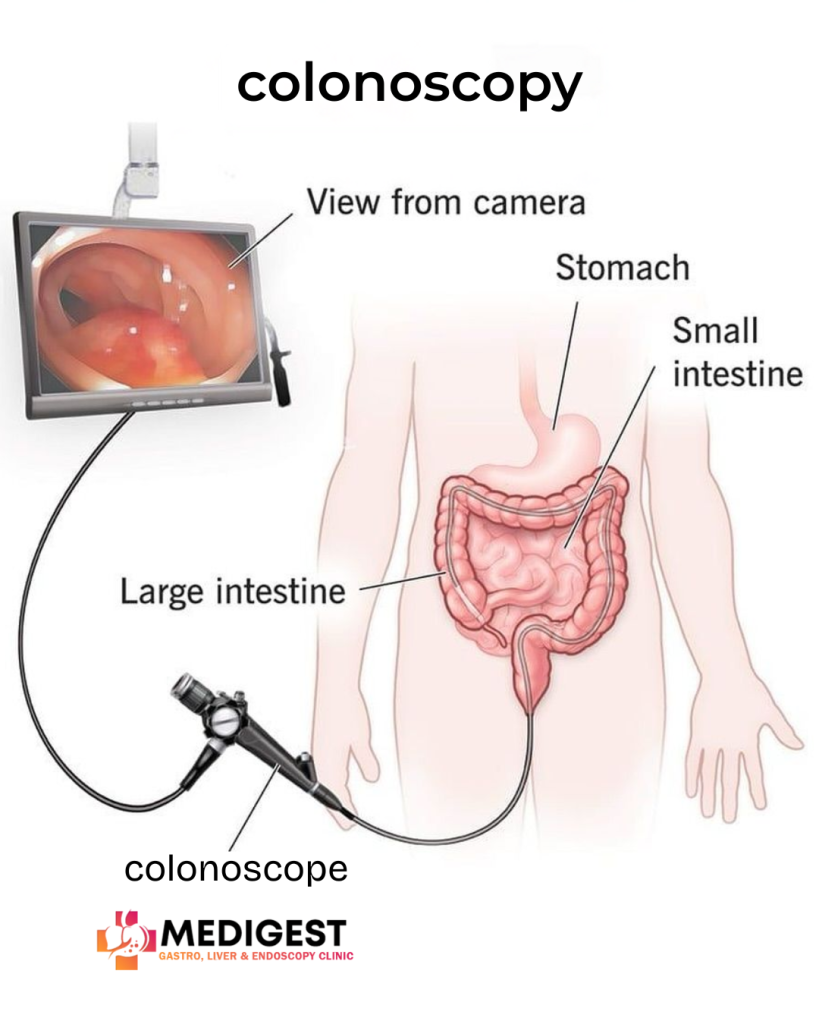
What it examines:
Entire colon (large intestine) and rectum.
- When it’s recommended:
Screening for colorectal cancer
Blood in stools or anemia
Chronic diarrhea or constipation
- Unexplained weight loss or changes in bowel habits
Procedure:
A colonoscope is inserted through the rectum to visualize the colon. Biopsies can be taken, and polyps or abnormal tissues can be removed during the procedure.
3. Bronchoscopy
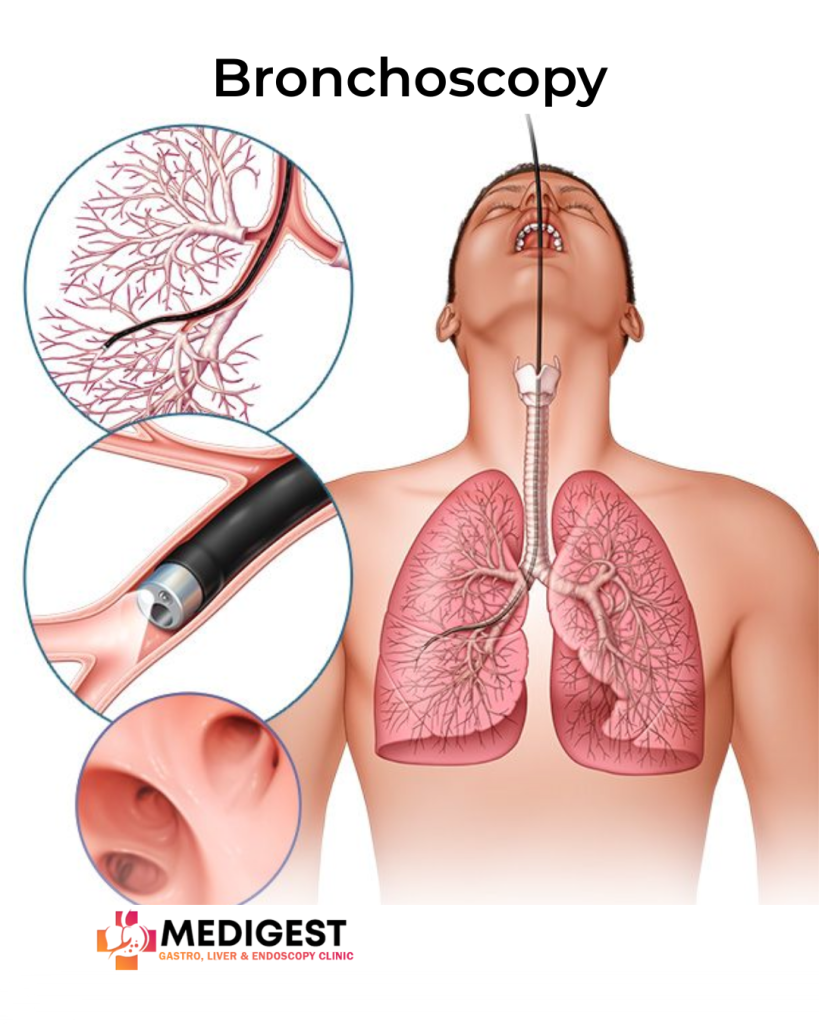
What it examines:
GI tract layers, nearby organs (like pancreas, liver), and lymph nodes.
When it’s recommended:
Evaluating pancreatic cysts or masses
Staging GI cancers
- Investigating unexplained upper GI symptoms
Procedure:
Combines endoscopy and ultrasound to get detailed images from inside the body. EUS allows for fine-needle aspiration (FNA) to take tissue or fluid samples from internal organs.
4. Endoscopic Ultrasound (EUS)
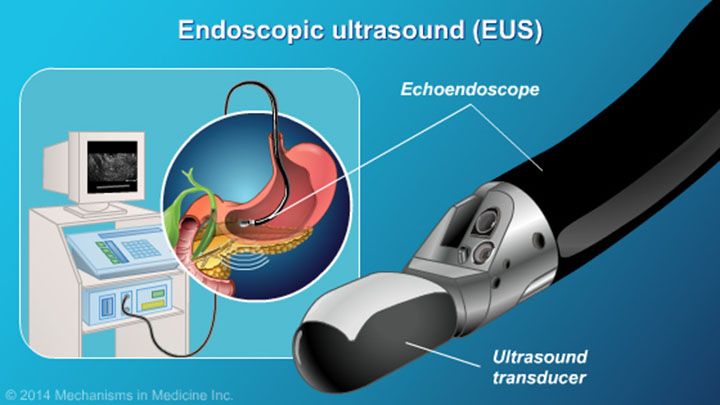
What it examines:
GI tract layers, nearby organs (like pancreas, liver), and lymph nodes.
When it’s recommended:
Evaluating pancreatic cysts or masses
Staging GI cancers
- Investigating unexplained upper GI symptoms
Procedure:
Combines endoscopy and ultrasound to get detailed images from inside the body. EUS allows for fine-needle aspiration (FNA) to take tissue or fluid samples from internal organs.
5. Sigmoidoscopy
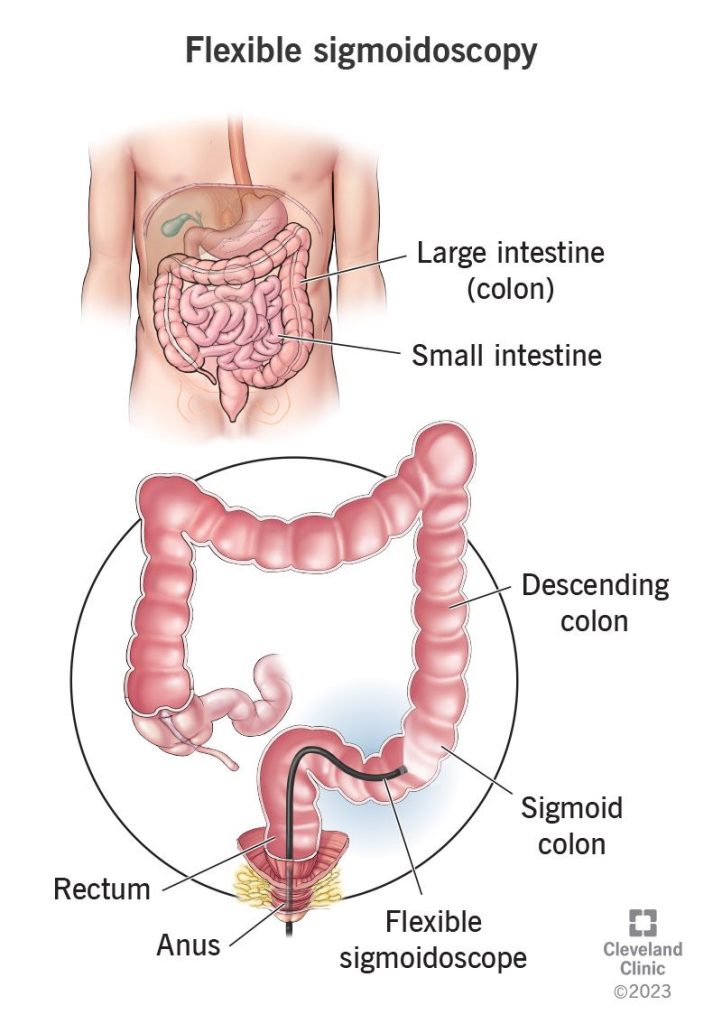
What it examines:
Lower portion of the colon (sigmoid colon and rectum).
When it’s recommended:
Rectal bleeding
Screening for polyps or cancer
Monitoring IBD (ulcerative colitis, Crohn’s disease)
Procedure:
Less extensive than a full colonoscopy, sigmoidoscopy is quicker and may be used when only the lower colon needs evaluation.
6. Capsule Endoscopy
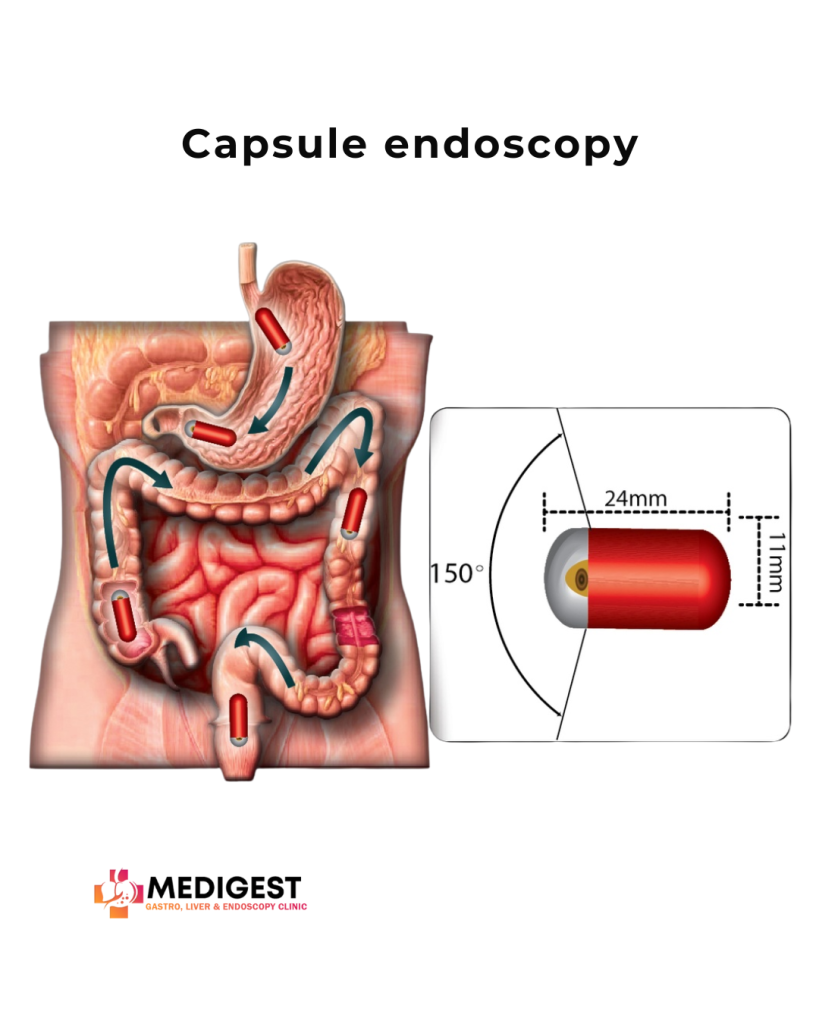
What it examines:
Lower portion of the colon (sigmoid colon and rectum).
When it’s recommended:
Rectal bleeding
Screening for polyps or cancer
Monitoring IBD (ulcerative colitis, Crohn’s disease)
Procedure:
Less extensive than a full colonoscopy, sigmoidoscopy is quicker and may be used when only the lower colon needs evaluation.
7. Endoscopic Retrograde Cholangiopancreatography (ERCP)
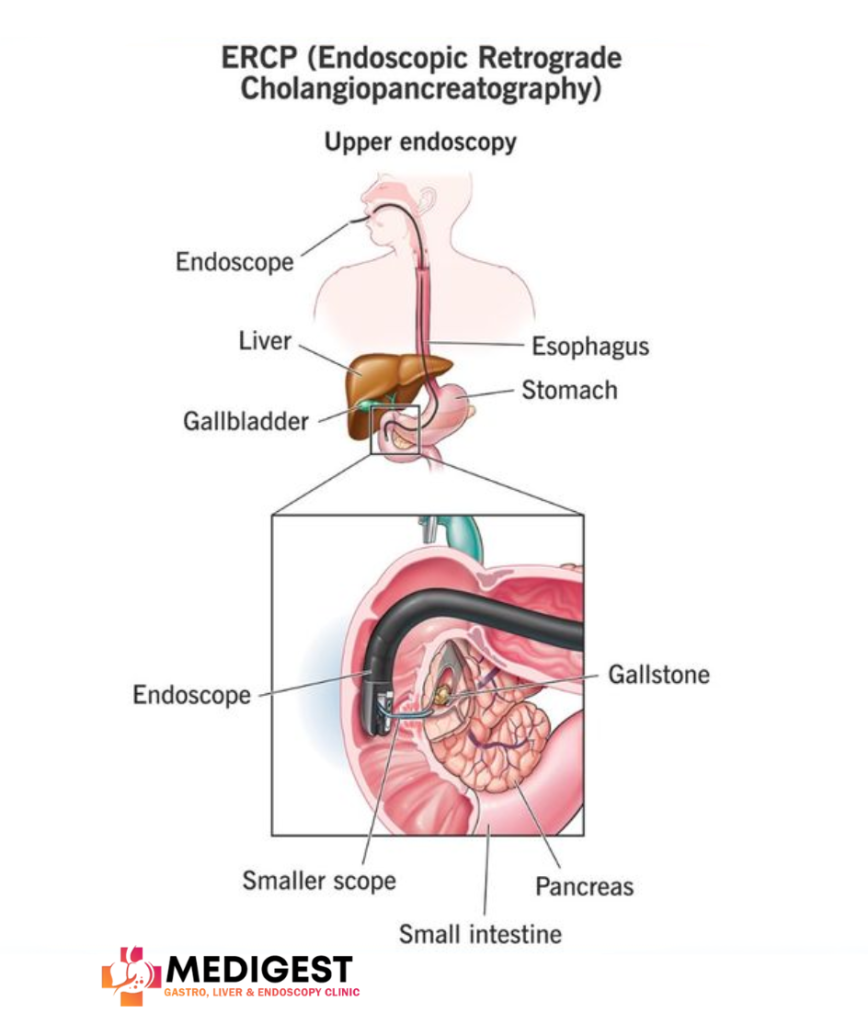
What it examines:
Bile ducts, gallbladder, and pancreas.
When it’s recommended:
Gallstones
Bile duct blockages
Pancreatitis
Jaundice with unclear cause
Procedure:
Combines endoscopy and X-ray to diagnose and treat problems in the pancreatic or bile ducts. Therapeutic interventions like stent placement or stone removal are often done.
Which Endoscopy is Right for You?
Every type of endoscopy serves a specific purpose and is chosen based on your symptoms, history, and doctor’s evaluation. Dr. Shrihari Anikhindi, a leading and highly experienced gastroenterologist in Delhi, offers comprehensive endoscopy services including therapeutic procedures like POEM, ESD, and advanced GI motility testing.
Whether you are struggling with unexplained gut symptoms, chronic acidity, or screening needs, you deserve expert evaluation. If you’re wondering who is the best gastrologist in Delhi, look no further than Dr. Shrihari Anikhindi, known for his patient-first approach and clinical excellence.
Conclusion
Endoscopy is a powerful tool that can help uncover the root cause of digestive or respiratory symptoms. Understanding its types can help you make informed decisions about your health.
If you’re seeking the best gastroenterologist in Delhi, or need expert opinion on whether an endoscopy is right for you, schedule a consultation with Dr. Shrihari Anikhindi today.
